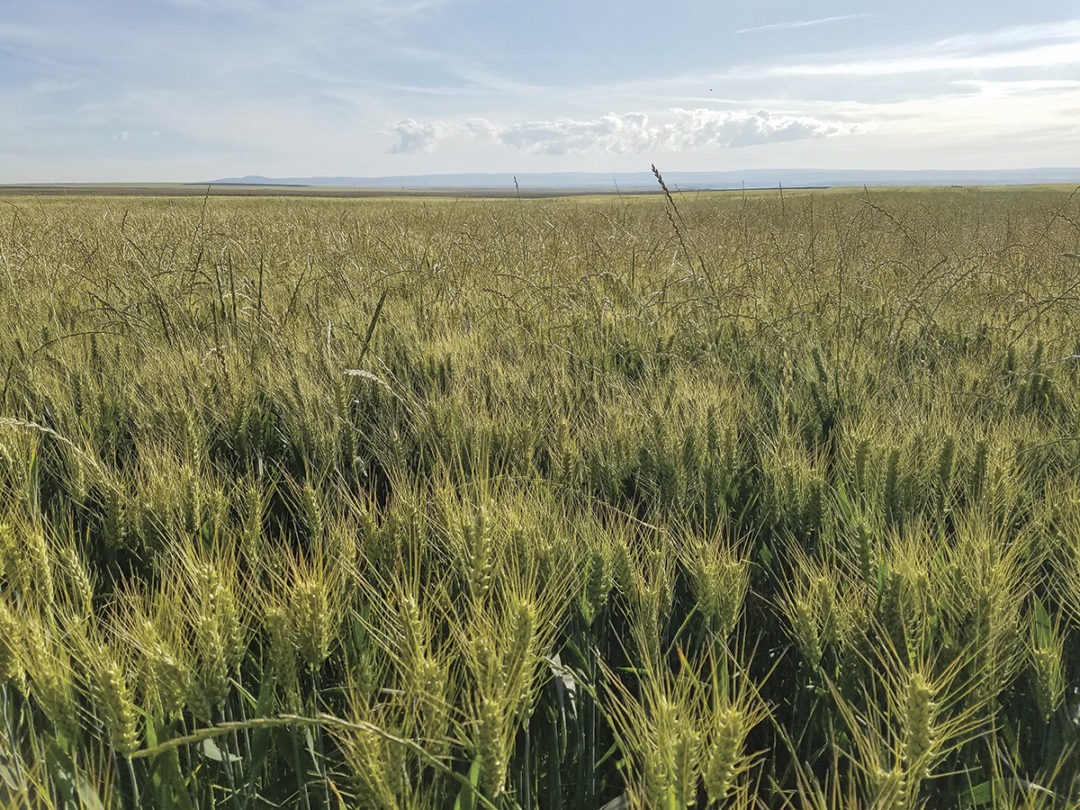This past year, we logged another unfortunate first in our losing battle with herbicide-resistant (HR) weeds. University of Idaho (UI) weed scientists confirmed the presence of a biotype of glyphosate-resistant downy brome (cheatgrass) in Idaho. This unwelcome news comes on the heels of a UI-led weeds survey of Italian ryegrass in northern Idaho and eastern Washington, which found an expanding presence of herbicide-resistant populations.
We have seen herbicide resistance in weeds since shortly after the first herbicide was released, but the issue is expanding (over 513 unique HR cases globally and climbing), and our options for mitigating the problem are increasingly limited. For decades, we have had the luxury of switching to a new chemistry when resistance developed to the ones we were using. This strategy works so long as new chemistries are available, but new herbicides are not being released at the pace of previous decades. Increasingly, the watchword for all herbicides is stewardship to increase the amount of time any given herbicide lasts as a viable tool.
Researchers and growers in the inland Pacific Northwest recently heard firsthand how problematic HR weeds can become from visiting Fulbright Scholar Michael Walsh, director of weed research at the University of Sydney, Australia. He described how Australia’s annual ryegrass, a close cousin to our Italian ryegrass, and a wild radish species have developed widespread resistance to multiple sites of action among herbicides in Australian cropping systems. As a result of HR and a corresponding lack of in-crop herbicide options, Australian growers pioneered combine add-ons that create chaff rows for baling or burning, or developed pulled-behind or combine-integrated impact mills to manage weed seeds. These harvest weed seed control activities, when used in combination with a diversified crop rotation and multiple herbicides targeting different sites of action, have proved effective at mitigating the issue – and have come at a considerable expense. It is estimated that herbicide-resistant annual ryegrass is costing growers in western Australia $100 million annually.
Considering the growing threat (pardon the pun) of HR weeds, what can and should be done in Idaho and the greater inland Pacific Northwest? There is a well-established, proven method for mitigating the development of herbicide-resistant weeds called integrated pest management (IPM). Rotating and combining herbicide sites of action, rotating crops to change the timings and types of weed control, cleaning equipment before it leaves a field and planting certified seed are some cornerstones of this approach. Unfortunately, economic necessity often beats an ideal crop rotation. Herbicides are expensive, and doubling up products can be doubly so. Certified seed has a cost that some find prohibitive, and properly cleaning equipment raises labor expenses and takes that most precious of resources at harvest: time.
Finally, some might reasonably ask why go to all the expense and effort themselves if their neighbors are not willing to, and if extreme weather events or wildlife might result in HR seeds moving onto their property anyway? Sociologists call this a “wicked problem,” or one that has so many factors it doesn’t ever get solved, just managed for better or worse.
Although HR weeds have been increasing in number and geographic footprint, the news is not all doom and gloom. At the prompting of a concerned Craigmont, Idaho, farmer and then-Idaho Oilseed commissioner, Steve Riggers, an ad-hoc working group of university researchers and extension personnel formed to address this “wicked” issue and created a path forward.
Recognizing the importance of the issue, a group of influential stakeholders including our Idaho, Oregon and Washington small-grain commissions and grain production organizations supported the creation of a Pacific Northwest Herbicide Resistance Initiative (PNWHRI). With their critical support and the efforts of many others, to our pleasant surprise, the U.S. Congress supported the initiative as well. The result is a $2 million effort kicking off this winter, which will provide funds to our three PNW land grant institutions – University of Idaho, Oregon State University and Washington State University – and three USDA-ARS units at Pullman, Washington; and Pendleton, Oregon, to support addressing herbicide resistance in small-grains production systems. The goal is to create a coordinated, interdisciplinary, systems-based approach that is regional in scope with long-term impact.
Among the key questions that will be addressed by fundamental and applied aspects of this work are: How will weed seed longevity and viability be affected in different cropping systems under different management practices? How will crop rotation diversification and intensification affect HR weed populations in different rainfall zones? Can we effectively adopt and adapt new weed control technologies, like harvest weed seed control, precision spraying and even novel blue- and red-light treatments to our farming systems? Can we learn alongside our grower-cooperators how to develop and implement better HR management practices in ways that not only work but are more likely to be widely adopted?
We will do our stakeholders (Idaho farmers) a disservice if we address this “wicked” problem in a traditional way. We need to acknowledge that what we as educators have been doing in the HR weeds space has not been effective, but if we ignore this issue, we do so at our own peril.
Australia should serve as a cautionary tale of what happens in small-grains systems when HR gets out of hand. However, I am extremely encouraged that not only is there a renewed effort to address herbicide-resistant weeds in our cropping systems, but also that it will be done with an eye toward providing practical solutions within a modern farm context. There is much to do and much to be discovered.








